Brassicas are an excellent addition to many cover crop mixtures because of their ability to suppress weeds and break up soil compaction. Brassicas are also used for nutrient scavenging and producing a high amount of biomass in the fall. They can be a great component of a grazing mixture when used at appropriate seeding rates. Here are Green Cover’s top 10 brassica varieties by sales volume.
1. Daikon Radish (Raphenus sativa)
If people only know one other cover crop besides rye, it’s probably radishes. Known for its deep tuberous tap root, radishes have great compaction-breaking abilities. In order to produce the best and biggest tubers, radishes should be planted in late summer and early fall as they will bolt and try to produce seed when spring planted. Radishes can also produce significant leaf material for early fall grazing. These brassicas will winter kill with multiple nights in the upper teens and tend to break down and cycle nutrients quickly in the spring.


2. Impact Forage Collards (Brassica oleracea)
Impact forage collards are a cross between Georgia Southern collards and another leafy brassica and are one of the best grazing brassicas on the market. The large, smooth leaves are very palatable and our testing shows that these collards have the highest protein content in the brassica family. Collards can withstand some of the widest ranges of weather, from hot and dry in the summer, and surviving temperature down to the low single digits in the winter.
3. Purple Top Turnip (Brassica rapa)
Purple top turnips have been a staple grazing brassica for many years and are commonly used in late summer planted grazing mixes, often with a cool season cereal. Turnip bulbs are storehouses of nutrition and energy and are very valuable to winter grazers.
4. Rapeseed (Brassica napus)
Rapeseed is the least expensive of the brassicas, but it still offers many of the same benefits that most brassicas offer. Being small seeded, it is a great low cost option for broadcasting with 1-2 pounds in a mix and 6-8 pounds as a full seeding rate. Rapeseed plants tend to be higher in fiber so they are not as palatable as some of the premium brassicas like collards or Vivant turnips, but adding a pound or two to a late summer or early spring planted mix is a very economical way to add diversity. Rapeseed is one of the more cold tolerant species and may over winter in Zone 6 and south.
5. African Cabbage (Brassica carinata)
African cabbage is a robust and fast, tall growing brassica that tolerates heat better than most of its cousins. African cabbage also has a much higher C:N ratio at maturity and retains its leaves and maintains its stalk structure throughout much of the winter. This makes it a great fit for inclusion into warm season mixes and its upright and resilient structure make it a great snow catch crop. The naturally high levels of glucosinolates give it a spicy flavor and make it less palatable for livestock than other choices.
6. Mustard (Brassica juncea “brown” and Sinapis alba “white”)
Mustards grow very quickly and are excellent for weed control and their early blooming make them a perfect addition to pollinator mixes. White Gold mustard can be blooming in as little as 30 days after planting.Brown mustards like Kodiac and Indi Gold are bred specifically to contain very high levels of glucosinolates which make them valuable to combat harmful soil nematodes within a potato or beet rotation. Florida Broadleaf mustard would be the best choice to add into grazing mixes as it is the most palatable and is used in the human food stream as mustard greens.
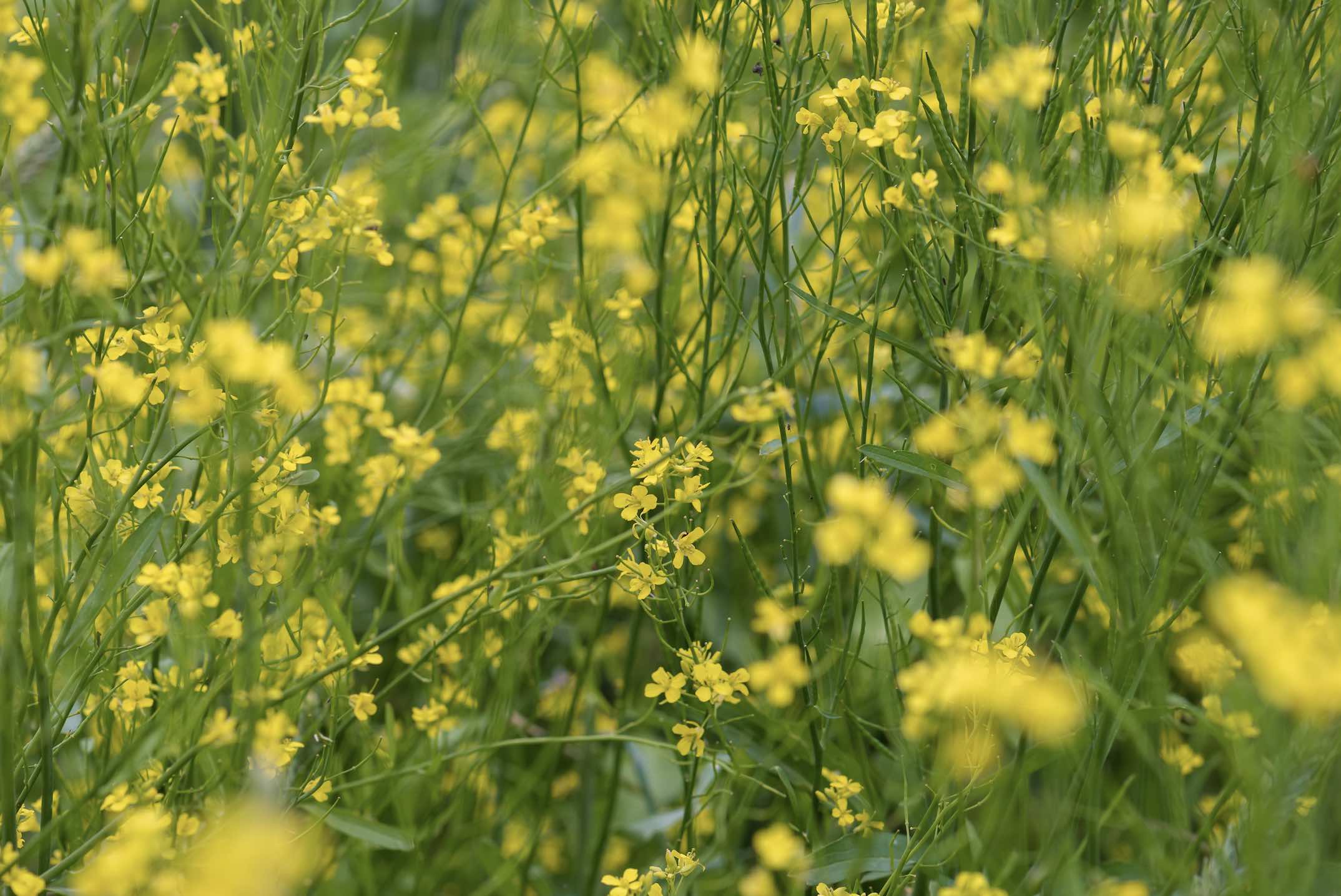
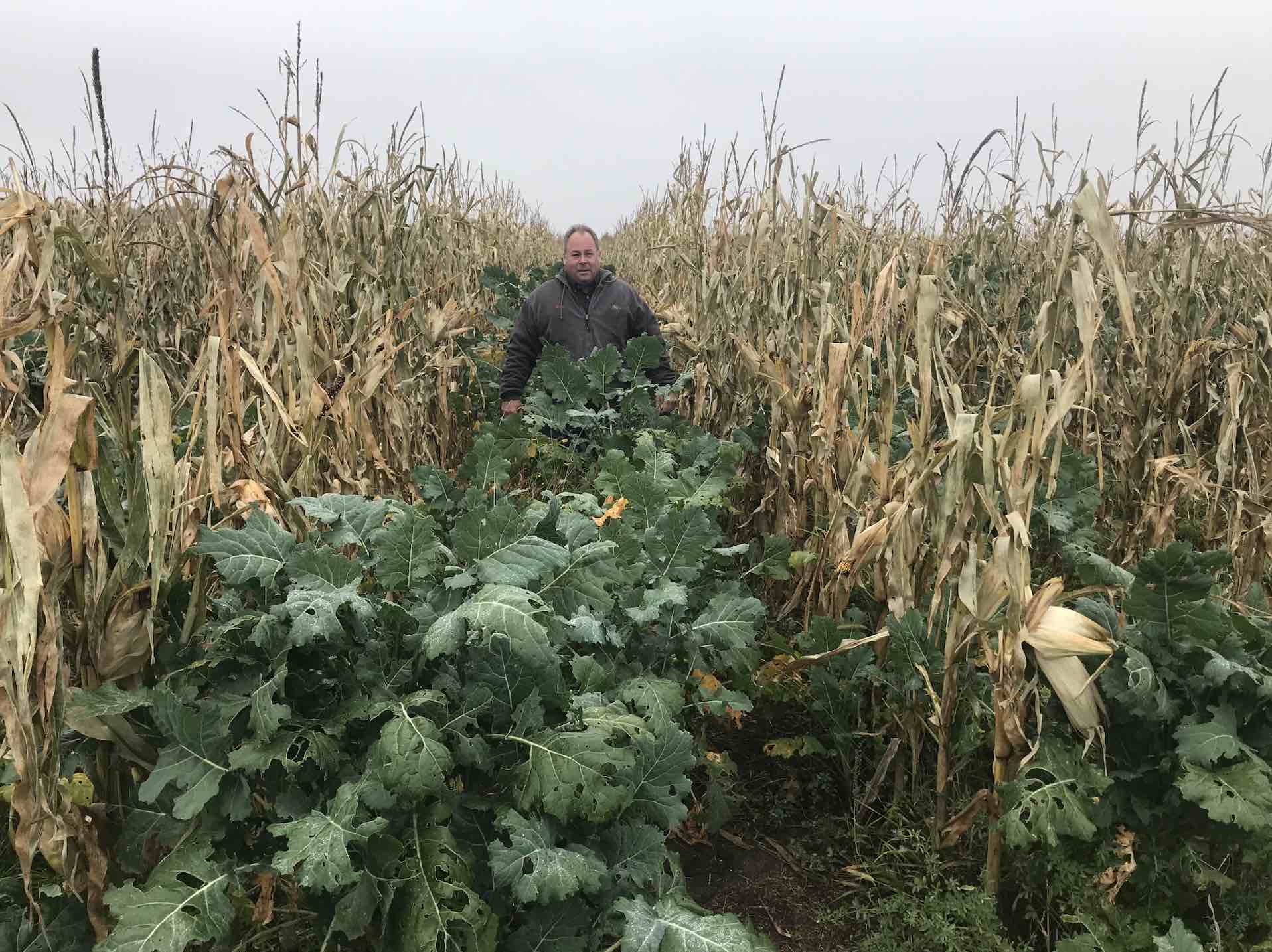
7. Bayou Rape Hybrid Kale (Brassica oleracea)
This hybrid plant is the product of blending two brassica parent plants: kale and forage rape. This innovative hybrid boasts a unique combination of qualities, harnessing the quick establishment capabilities of forage rape and the exceptional winter resilience of kale. The resulting kale-rape hybrid stands as a superior source of high-protein forage, tailor-made for winter grazing. Its accelerated growth, robust vigor, and resilience to harsh winter conditions make it an ideal choice for livestock feed.
8. Smart Radish (Raphenus sativa)
Smart Radish is much like other daikon radishes but it has several competitive advantages. First, it has a smoother leaf and more tillering for better grazing. It also can produce more biomass, adding to its forage benefits. As far as compaction breaking, the below-ground tuber is V-shaped, helping it to keep pushing down through compaction rather than heaving upwards. Lateral roots branching off the side of the tuber help keep it anchored in the ground throughout the changing weather.
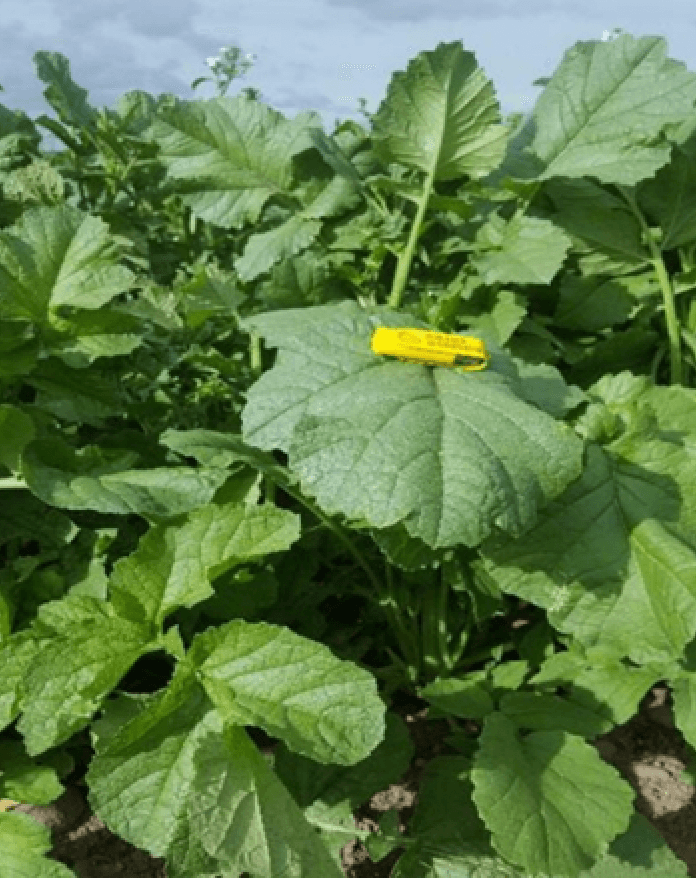
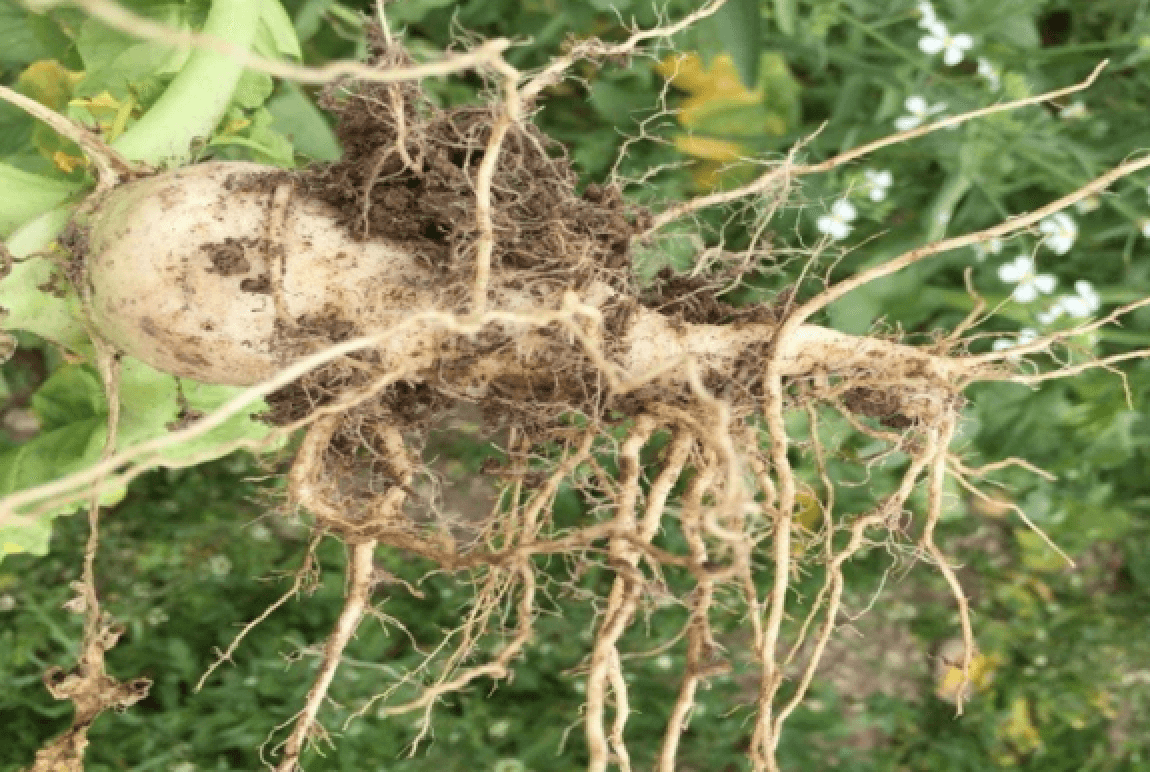
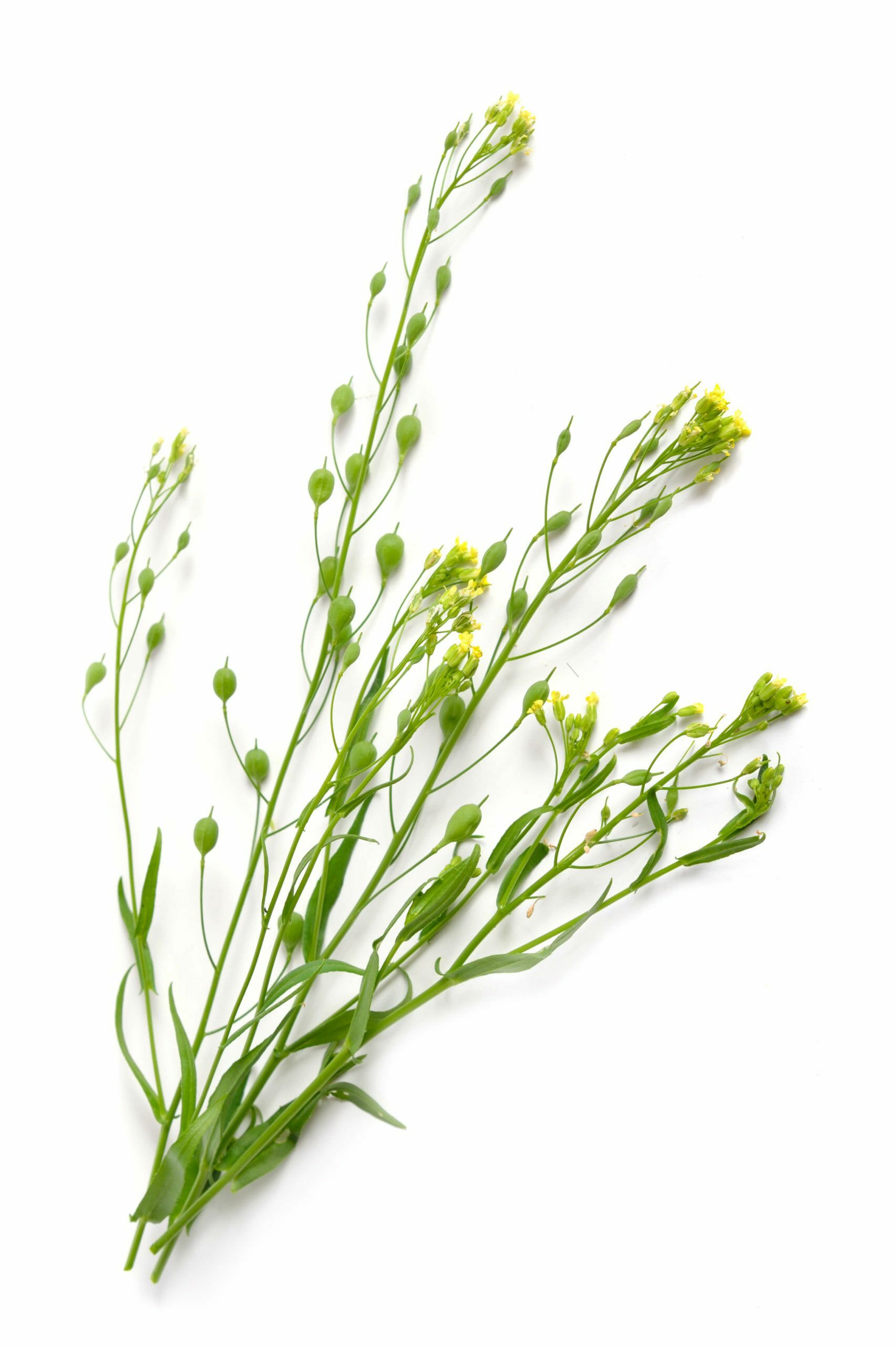
9. Winter Camelina (Camelina sativa)
Winter Camelina is the most cold-tolerant brassica and has the ability to overwinter in most areas when planted appropriately. This brassica grows a small rosette in the fall and then grows upright after winter dormancy. This is a good brassica to add to later-planted fall mixes for use after fall-harvested cash crops. Camelina can be a great addition ahead of spring cash crops with its ability to scavenge nitrogen and phosphorus. The commercial use of camelina oil is making sustainable aviation fuel, so there is a push to produce acres of camelina for that market right now.
10. Vivant Hybrid Turnip (Brassica rapa X)
Vivant Hybrid Turnip is a Forage Turnip/Forage Rape hybrid that is fastgrowing but has little bulb development. Vivant can produce up to 80% more leafy vegetation than Purple Top Turnips. Vivant Forage Brassica is an excellent choice for livestock because of its excellent regrowth after heavy grazing. With surprisingly good heat tolerance for a brassica, Vivants could be used in a spring grazing mix and could persist all the way into fall in a rotational grazing system.


This article first appeared in the 10th Edition of Green Cover's Soil Health Resource Guide.
Dive into over 90 pages packed with scientific articles and fascinating stories from soil health experts, researchers, farmers, innovators, and more! All as our complimentary gift to you, a fellow soil health enthusiast!